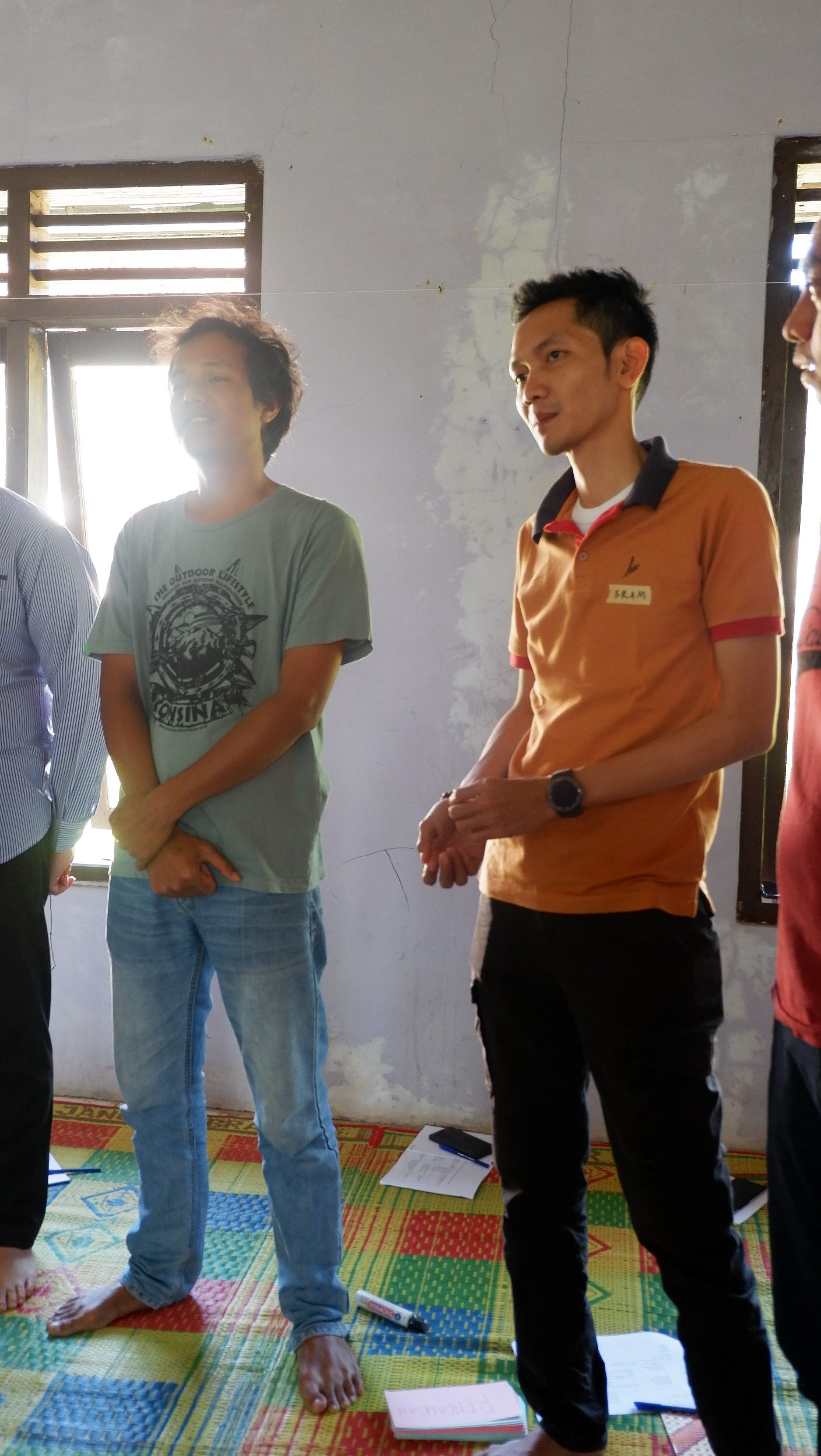*Report from Supriadi and Wardathul Zanna (RMI).
On November 16-18, 2018, the Association of Indonesian HuMa and Young Foresters of Indonesia (RMI) held the Indigenous Forest Field School (SLHA) in Kasepuhan Pasir Eurih, Sindanglaya Village, Sobang District, Lebak Regency, Banten Province.
The materials were presented at the old village office, and field practicals were conducted in the field in front of the residents’ cemetery. Not in luxurious hotels, like events held by village developers from October to December, when the budget has not been fully utilized.
First Day, November 16, 2018.
There were 28 participants, consisting of 10 women and 18 men.
The field school activities were opened by Koh Indra (RMI) as the facilitator, introducing the general objectives of the Indigenous Forest Field School activities, so that participants could understand the meaning and learning objectives of the activities. Then, participants and facilitators introduced themselves by stating: nickname – favorite food – favorite idol/figure. After the introductions, participants were asked to write down their hopes and concerns about the activities, which were then read out by each participant.
In the second session, participants were invited to play “Description of Words“, facilitated by Supriadi and Warda (RMI). Participants were divided into groups, each consisting of 3 people. Each group was asked to write and explain words that were familiar to the Kasepuhan community. For example, rendangan (the branching of the Kasepuhan Indigenous Community), bintang kidang and bintang kerti (the seven-star and three-star signs, which serve as signs for farmers to start planting), leuit kasepuhan (a rice barn to store pare gede), pare gede (a variety of large-grained rice planted by the Kasepuhan Indigenous Community), Dewi Sri (the rice goddess believed to bring fertility to the land and agriculture), and so on. During the group presentation process, each participant and facilitator were allowed to ask questions or add information. This is where the learning process took place.
The session ended with reflections from each participant on the new information they had learned. Participants felt assisted as they could deepen their understanding of various customary terms that they had only heard before.
The third session was a presentation on the History of the Kasepuhan Indigenous Community, by Koh Indra (RMI). The material presented ranged from the history of the Tarumanegara Kingdom, the Sunda-Galuh Kingdom (Pajajaran) and its inscriptions (prasasti) about the kingdom, the spread of Islam





0 Comments
Leave a Reply